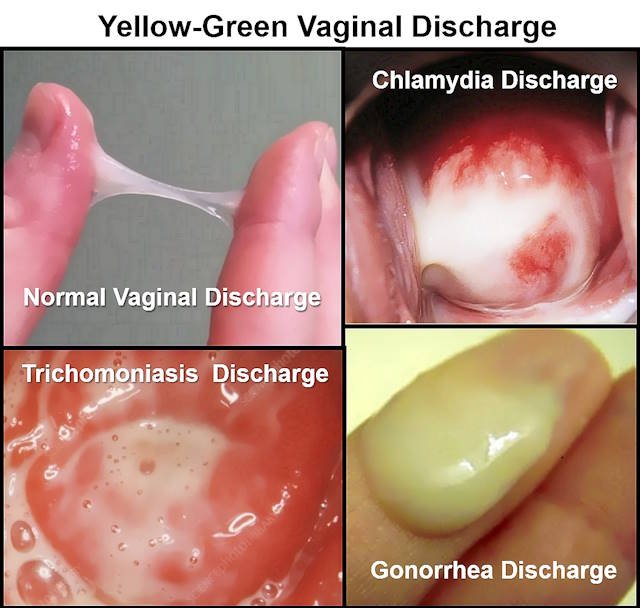Green Vaginal Discharge: Causes, Treatment & When to See a Doctor
Have you ever noticed green discharge in your underwear or when you wipe? While it can be alarming, it’s important to understand what might be causing it and when to seek medical attention. Vaginal discharge comes in many colors and textures, and green discharge is often a sign that something isn’t quite right. In this article, we’ll explore the causes of green discharge, what it means for your health, and when you should see a doctor.
What Is Green Vaginal Discharge?
Vaginal discharge is a normal part of your body’s way of keeping your reproductive system healthy. It’s typically clear, white, or off-white and may vary in texture throughout your menstrual cycle. However, green discharge is almost always abnormal and usually indicates an infection or other underlying issue.
Green discharge can occur alongside changes in thickness, consistency, and odor. These changes can help your healthcare provider diagnose the problem. Other symptoms that may accompany green discharge include abdominal or pelvic pain, itching, fever, and discomfort during urination or sex.
What Causes Green Discharge?
Green vaginal discharge is often a sign of an infection. While this might sound scary, many infections are easily treatable with medication. Below are some common causes of green discharge:
Sexually Transmitted Infections (STIs)
Sexually transmitted infections (STIs), such as trichomoniasis, gonorrhea, or chlamydia, often cause green or yellow-green vaginal discharge. These infections may also lead to additional symptoms, including:
- Yellow or gray discharge
- A strong or unpleasant odor
- Frothy or unusual consistency
If you notice these symptoms, it’s important to get tested for STIs. Early detection and treatment can prevent complications like pelvic inflammatory disease (PID) or fertility issues. STI screenings are quick and painless, and if you test positive, your doctor will prescribe the appropriate treatment. Be sure to inform any recent sexual partners so they can also get tested.

Trichomoniasis: A Common STI Linked to Green Discharge
Trichomoniasis, often called “trich,” is a sexually transmitted infection caused by a parasite. It spreads through unprotected sexual contact and can lead to green discharge that is:
- Thin
- Foamy
- Foul or fishy-smelling
The discharge may also appear yellow or white. Other symptoms of trichomoniasis include:
- Itching, burning, or soreness in the genital area
- Painful urination
- Discomfort during sex
In the U.S., approximately 2 million people are diagnosed with trichomoniasis each year. The infection is treated with oral antibiotics and will not resolve on its own. Without treatment, it can persist for months or even years and can be transmitted to sexual partners. For more details see “Trichomoniasis (Trich): Causes, Symptoms, Diagnosis & Treatment“.
Gonorrhea: Another STI That Can Cause Green Discharge
Gonorrhea, sometimes called “the clap,” is a bacterial STI that can be prevented by using condoms. If left untreated during pregnancy, it can be passed to the baby. Gonorrhea may cause vaginal discharge that is:
- Thick
- Green or yellow
- Heavier than usual
Other symptoms of gonorrhea include:
- Painful urination
- Vaginal bleeding between periods
- If untreated, pelvic inflammatory disease (PID), which can lead to chronic pelvic pain and infertility
- In rare cases, a blood infection called disseminated gonococcal infection, which can cause arthritis, joint infections, or skin rashes
Many people with gonorrhea experience no symptoms, which is why the Centers for Disease Control and Prevention (CDC) recommends annual screening for sexually active women under 25. Gonorrhea is typically treated with an antibiotic injection. For more information about Gonorrhea see “Gonorrhea: Symptoms, Treatment & Prevention“.
Chlamydia: An STI That Can also Cause Green Discharge
Chlamydia is the most common bacterial STI, especially among young adults. It can also be transmitted to a baby during childbirth. While chlamydia often has no symptoms, when symptoms do occur, they may include:
- Green, yellow, or white discharge
- A strong odor
- Painful urination
- Discomfort during sex
- Itching or irritation around the genitals
- If the infection spreads, lower abdominal pain, nausea, or fever
Using condoms can help prevent chlamydia. The infection is treated with oral antibiotics. For more information see “Chlamydia: Causes, Symptoms, Treatment & Prevention“.
Bacterial Vaginosis (BV)
Bacterial vaginosis (BV) is a common vaginal infection that can cause greenish, off-white, or gray discharge. It’s often accompanied by a strong, fishy odor and itching around the vulva. BV occurs when there’s an imbalance in the natural bacteria in your vagina. While bacteria are often associated with illness, your vagina naturally contains a mix of good and bad bacteria that help maintain its health.
Certain factors can disrupt this balance, such as using scented products, douching, or using harsh cleansers. These practices can irritate the vagina and lead to infections. If you suspect you have BV, it’s important to see a doctor. BV is typically treated with antibiotics, and symptoms usually improve quickly with proper treatment. For more details see “Bacterial Vaginosis: Causes, Symptoms, and Treatments“.
Pelvic Inflammatory Disease (PID)
Another potential cause of changes in your vaginal discharge, including green discharge, is pelvic inflammatory disease (PID). PID is not a sexually transmitted infection (STI), but it can develop when an untreated STI allows bacteria to spread into your reproductive organs, such as the uterus, fallopian tubes, or ovaries.
PID can cause symptoms like abdominal pain, irregular bleeding between periods, and pain during sex. If your doctor suspects PID, they will likely prescribe antibiotics to treat the underlying infection. Left untreated, PID can lead to serious complications, including infertility or chronic pelvic pain. For more details please see “Pelvic Inflammatory Disease (PID) Symptoms, Treatment & Prevention“.
Forgotten Tampon or Foreign Object
You might be wondering how a foreign object could lead to green discharge. A foreign object refers to anything left inside the vagina that shouldn’t be there, such as a forgotten tampon or a condom that slipped off during sex. The vagina is a warm, moist environment, which makes it an ideal place for bacteria to grow if something is left inside for too long.
For example, leaving a tampon in for more than the recommended eight hours can allow bacteria to multiply, potentially leading to an infection. In rare cases, this can result in toxic shock syndrome (TSS), a life-threatening condition caused by bacteria entering the bloodstream. Symptoms of TSS include nausea, vomiting, fever, and muscle aches. While TSS is rare (affecting only one to three people per 100,000), it requires immediate medical attention. If you suspect TSS, seek help right away, as antibiotics are often needed for treatment.
Green Discharge During Pregnancy
Pregnancy often brings changes in vaginal discharge due to hormonal shifts. Many people notice an increase in discharge during early pregnancy, which is typically thick and clear or white. This discharge helps protect against infections by preventing bacteria from traveling up to the uterus.
However, green discharge during pregnancy could indicate an infection, such as bacterial vaginosis (BV), thrush or an STI. Infections during pregnancy can pose risks to both you and your baby, so it’s important to contact your healthcare provider if you notice green discharge. They can recommend safe treatments to address the issue. For more details please read “Vaginal Discharge During Pregnancy: What’s Normal and What’s Not“.
How to Prevent Green Discharge
Maintaining good vaginal health is essential to preventing infections that can lead to green discharge. By adopting healthy habits and avoiding irritants, you can reduce your risk of developing conditions that cause abnormal discharge. Here are some practical tips to keep your vagina healthy:
- Use water or mild soap: The vagina is self-cleaning, so avoid harsh or scented soaps. Clean the vulva with plain water or a mild, unscented soap.
- Avoid douching: Douching disrupts the natural balance of bacteria in the vagina, increasing the risk of infections.
- Wear breathable underwear: Opt for loose-fitting, cotton underwear to reduce moisture and irritation. Avoid wearing underwear at night to allow the genital area to breathe.
- Change menstrual products regularly: Replace pads or tampons every four to eight hours to prevent bacterial buildup.
- Practice safe sex: Use condoms to reduce the risk of sexually transmitted infections (STIs), which can cause green discharge.
- Wipe front to back: Always wipe from front to back after using the bathroom to prevent bacteria from spreading to the vagina.
- Avoid scented products: Steer clear of feminine hygiene sprays, scented pads, tampons, and perfumed toilet paper, as these can irritate the vaginal area.
- Limit hot tub use: Hot tubs can introduce bacteria to the vaginal area, so use them sparingly.
- Maintain daily hygiene: Bathe regularly and gently pat the genital area dry to keep it clean and dry.
When to See a Doctor
If you notice green discharge, it’s important to pay attention to any accompanying symptoms. While it might feel awkward to talk about discharge, your doctor is there to help. Green discharge is often a sign of an infection that requires treatment, such as antibiotics.
Other symptoms that warrant a doctor’s visit include:
- Burning or pain during urination
- Itching or irritation in the vaginal area
- Bleeding between periods
- Lower abdominal pain
Even if green discharge is your only symptom, it’s important not to ignore it. Some infections, like STIs, may not cause noticeable symptoms at first, but early treatment can prevent complications.
Frequently Asked Questions (FAQs)
Can a pH imbalance cause green discharge?
Yes, a pH imbalance in your vagina can lead to green discharge. The vagina naturally has a slightly acidic pH (around 4 to 4.5), which helps maintain a healthy balance of bacteria. If the pH becomes too alkaline, it can create an environment where harmful bacteria thrive, leading to infections like bacterial vaginosis (BV). Greenish discharge is a common symptom of BV, so if you notice this, it’s a good idea to see your doctor for evaluation and treatment.
What does light green discharge mean?
Light green discharge is often a sign of a mild infection, such as bacterial vaginosis (BV) or an early-stage sexually transmitted infection (STI). While it may not always be accompanied by other symptoms, it’s important to monitor for changes in odor, texture, or discomfort. If the discharge persists or worsens, consult your healthcare provider for further evaluation.
Can yellow-green discharge be normal?
Yellow-green discharge is typically not normal and usually indicates an infection, such as trichomoniasis or another STI. If you notice this type of discharge, especially if it has a foul odor or is accompanied by itching or pain, it’s important to see a doctor for testing and treatment.
What does green discharge without odor mean?
Green discharge without an odor can still be a sign of an infection, such as a mild case of bacterial vaginosis or an STI. While the absence of odor might make it seem less concerning, it’s still a good idea to consult your doctor to rule out any underlying issues.
Is green discharge a sign of an STD?
Yes, green discharge can be a symptom of sexually transmitted infections (STIs) like trichomoniasis, gonorrhea, or chlamydia. If you’re sexually active and notice green discharge, it’s important to get tested for STIs to ensure timely treatment and prevent complications.
Can stress cause green discharge?
Stress itself doesn’t directly cause green discharge, but it can weaken your immune system, making you more susceptible to infections that might lead to changes in discharge. If you’re experiencing green discharge, it’s more likely due to an infection rather than stress alone.
What does green discharge after sex mean?
Green discharge after sex could indicate an infection, such as an STI or bacterial vaginosis. It might also be a sign of irritation or an allergic reaction to a product, like a lubricant or condom. If the discharge persists or is accompanied by other symptoms, consult your doctor.
Closing Thoughts
Green vaginal discharge is always abnormal and requires medical attention. It may indicate a bacterial STI, another type of infection, pelvic inflammatory disease (PID), or a foreign object in the vagina. Pay attention to accompanying symptoms, such as a foul odor, painful urination, or signs of infection, as these can help your healthcare provider make an accurate diagnosis.
If you experience green discharge along with pain or fever, make an appointment with your healthcare provider. Treatment typically involves antibiotics, but the exact approach depends on the underlying cause. To prevent conditions that lead to abnormal discharge, practice safe sex and avoid using scented products in or around the vagina.










